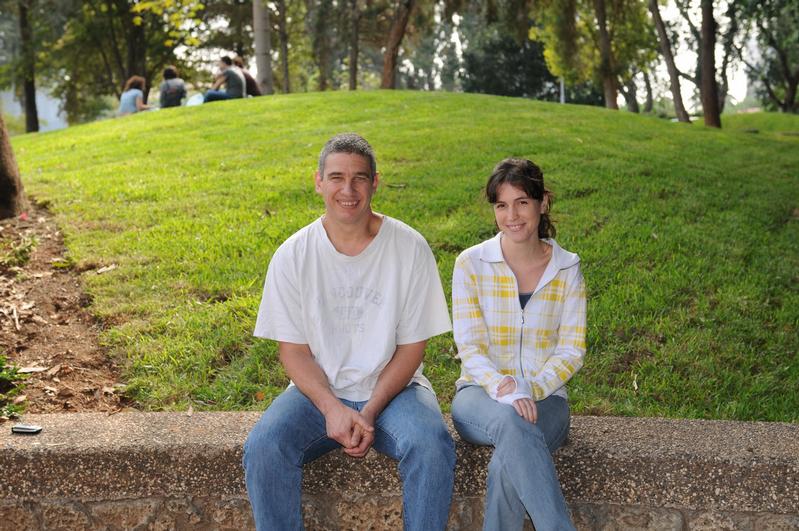Sniffing Out Memories
Why are some smells irrevocably tied to certain memories? Weizmann Institute scientists found that our brain shows unique activity the first time we encounter a smell in the context of a particular experience.
From Proust's Madeleines to the overbearing food critic in the movie Ratatouille who's transported back to his childhood at the aroma of stew, artists have long been aware that some odors can spontaneously evoke strong memories. Scientists at the Weizmann Institute of Science have now revealed the scientific basis of this connection. Their research appeared in the latest issue of Current Biology.
Graduate student Yaara Yeshurun, together with Profs. Noam Sobel and Yadin Dudai of the Institute's Neurobiology Department, thought that the key might not necessarily lie in childhood, but rather in the first time a smell is encountered in the context of a particular object or event. In other words, the initial association of a smell with an experience will somehow leave a unique and lasting impression in the brain.
To test this idea, the scientists devised an experiment: First, in a special smell laboratory, subjects viewed images of 60 visual objects, each presented simultaneously with either a pleasant or an unpleasant odor generated in a machine called an olfactometer. Next, the subjects were put in an fMRI scanner to measure their brain activity as they reviewed the images they'd seen and attempted to remember which odor was associated with each. Then, the whole test was repeated - images, odors and fMRI - with the same images, but different odors accompanying each. Finally, the subjects came back one week later, to be scanned in the fMRI again. They viewed the objects one more time and were asked to recall the odors they associated with them.
The scientists found that after one week, even if the subject recalled both odors equally, the first association revealed a distinctive pattern of brain activity. The effect was seen whether the smell was pleasant or unpleasant. This unique representation showed up in the hippocampus, a brain structure involved in memory, and in the amygdala, a brain structure involved in emotion. The pattern was so profound, it enabled the scientists to predict which associations would be remembered just by looking at the brain activity within these regions following the initial exposure. The scientists could look at the fMRI data on the first day of the experiment and predict which associations would come up a week later. To see if other sensory experiences might share this tendency, the scientists repeated the entire experiment using sounds rather than smells; they found that sounds did not arouse a similar distinctive first-time pattern of activity. In other words, these results were specific to the sense of smell. 'For some reason, the first association with smell gets etched into memory,' says Sobel, 'and this phenomenon allowed us to predict what would be remembered one week later based on brain activity alone'.
Yeshurun: 'As far as we know, this phenomenon is unique to smell. Childhood olfactory memories may be special not because childhood is special, but simply because those years may be the first time we associate something with an odor.
Prof. Noam Sobel's research is supported by the Nella and Leon Benoziyo Center for Neurosciences; the J&R Foundation; the Eisenberg-Keefer Fund for New Scientists; and Regina Wachter, New York, NY
The Weizmann Institute of Science in Rehovot, Israel, is one of the world's top-ranking multidisciplinary research institutions. Noted for its wide-ranging exploration of the natural and exact sciences, the Institute is home to 2,600 scientists, students, technicians and supporting staff. Institute research efforts include the search for new ways of fighting disease and hunger, examining leading questions in mathematics and computer science, probing the physics of matter and the universe, creating novel materials and developing new strategies for protecting the environment.
Weizmann Institute news releases are posted on the World Wide Web at
http://wis-wander.weizmann.ac.il, and are also available at http://www.eurekalert.org.
Ähnliche Pressemitteilungen im idw


